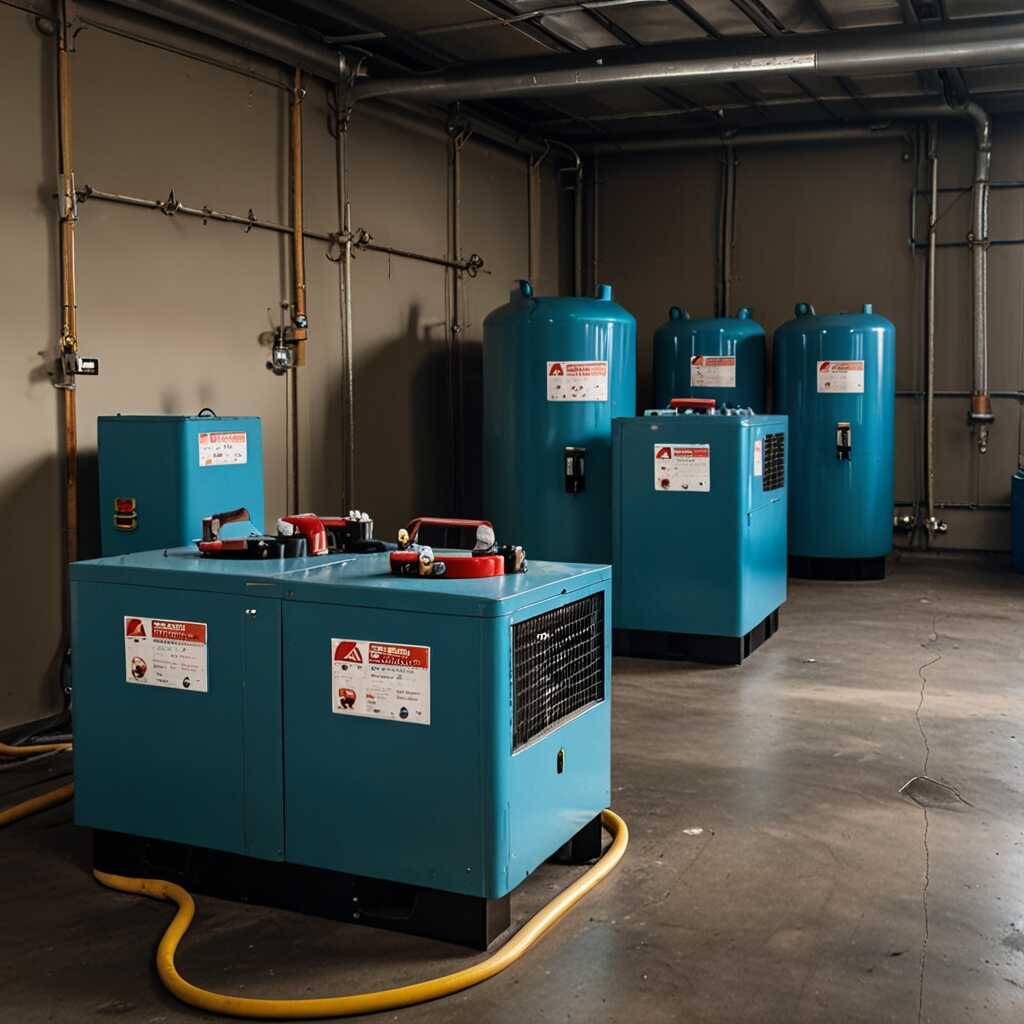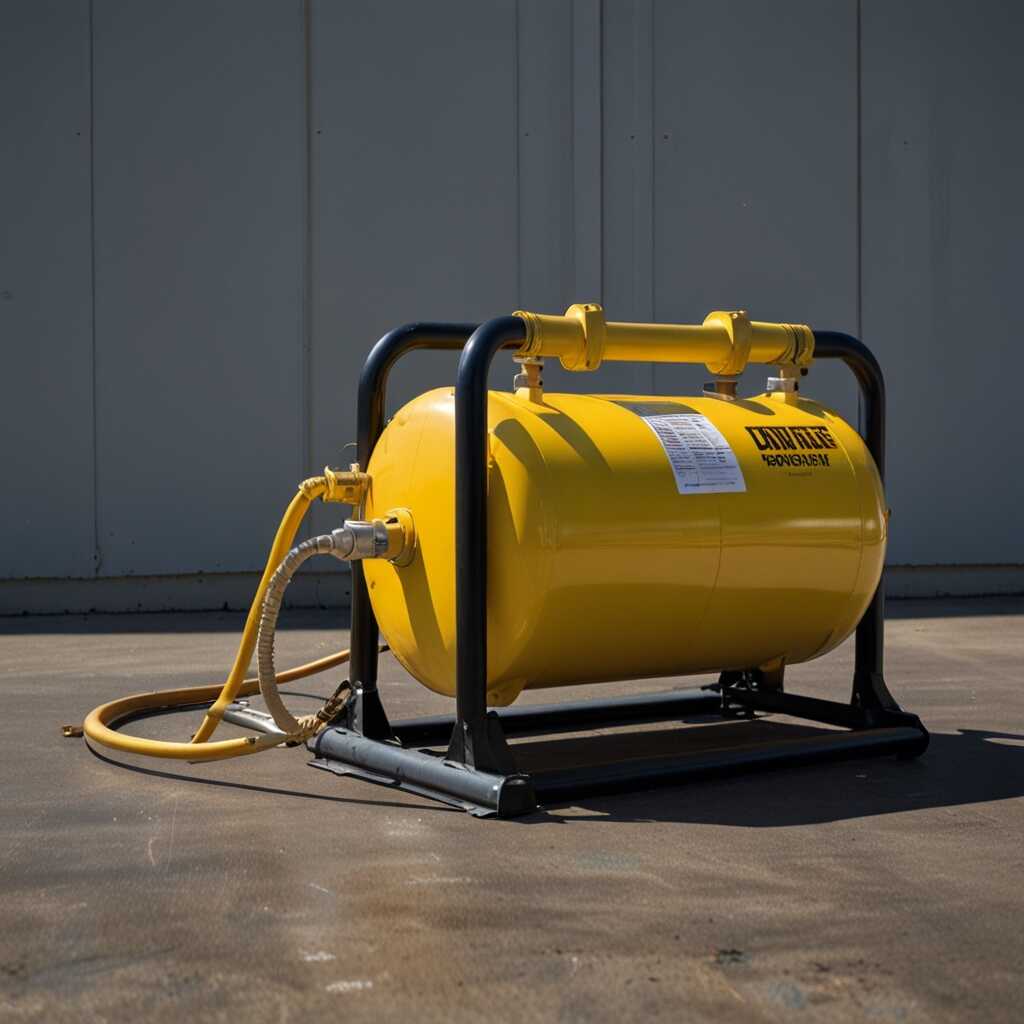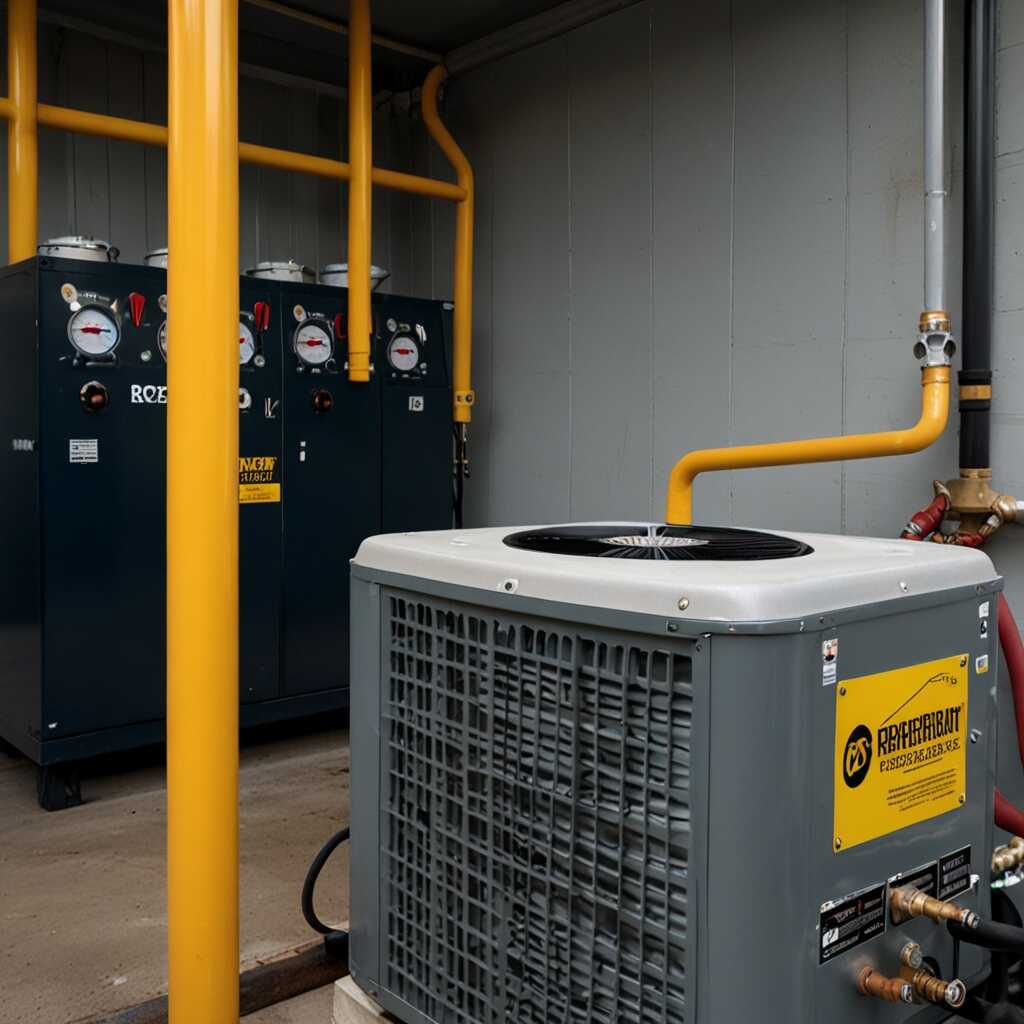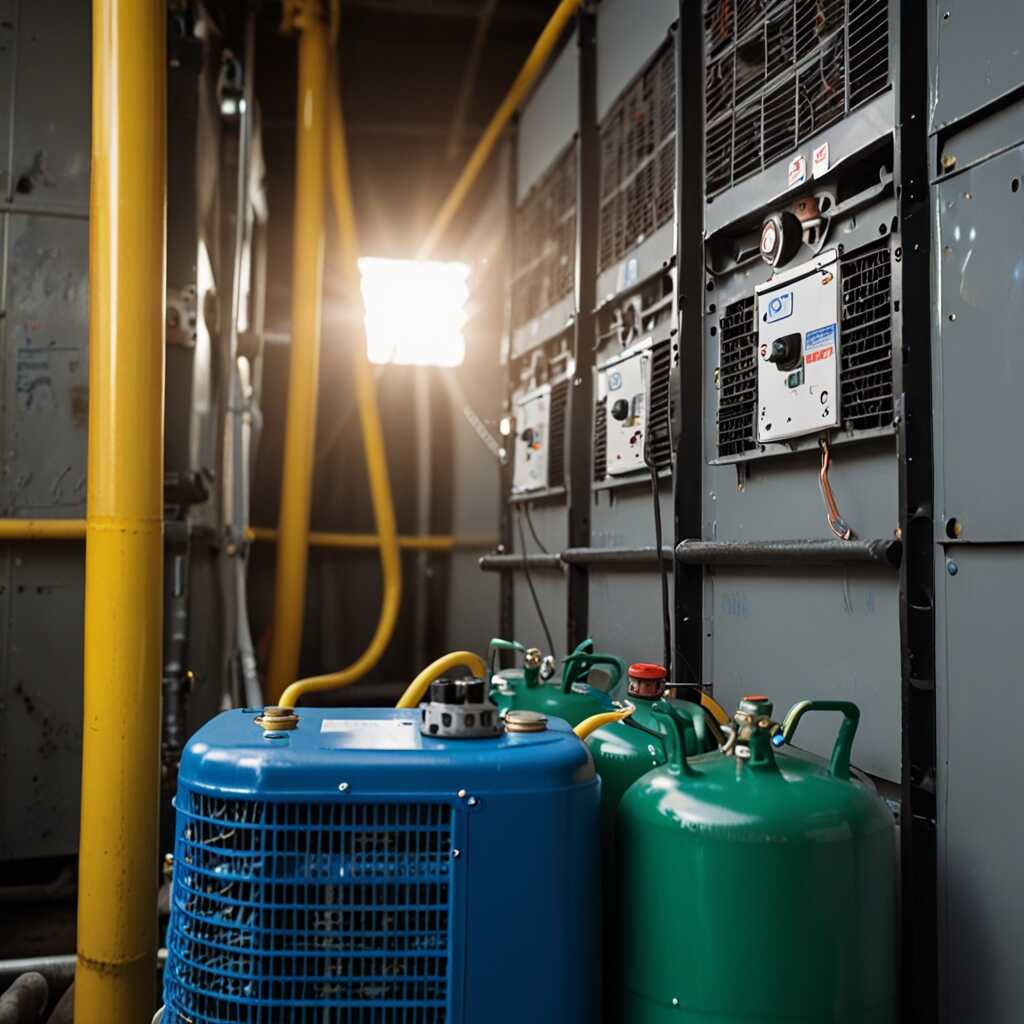How proper refrigerant recovery hose evacuation prevents contamination is critical for HVAC professionals. Effective hose evacuation ensures that recovery systems do not mix refrigerants, which can lead to environmental hazards and compliance issues. At Refrigerant Recovery Pro, we emphasize best practices in refrigerant management to help technicians enhance their recovery processes. Understanding proper evacuation techniques not only supports regulatory compliance but also protects the integrity of refrigerants.
What is Refrigerant Recovery and Its Importance in HVAC Practices
Refrigerant recovery is the process of removing refrigerant from HVAC systems to safely store it for reuse, recycling, or proper disposal. It helps HVAC technicians maintain equipment efficiency while also protecting the environment. Both the safety of technicians and compliance with regulations are ensured through effective recovery methods. Failing to recover refrigerants can lead to harmful emissions, contributing to ozone depletion and climate change. A typical refrigerant recovery machine can handle approximately 40 pounds of refrigerant in a single operation, making it essential to ensure full recovery for environmental protection.
Key Practices for Effective Refrigerant Recovery
To achieve effective refrigerant recovery, HVAC technicians must follow key practices. This includes using recovery machines designed to handle various types of refrigerants, ensuring they are maintained for optimal performance. Regular testing and servicing improves reliability and compliance with environmental regulations. An efficient refrigerant recovery process reduces leaks and enhances overall system performance. Technicians should adhere to safety protocols and stay current with regulatory updates, as improper disposal can lead to significant penalties. By implementing these practices, HVAC professionals enhance their reliability while contributing to environmental protection.
How Cross-Contamination Occurs During Refrigerant Recovery
Cross-contamination can happen in various ways during refrigerant recovery. Common causes include using the same recovery hose for different refrigerants without proper cleaning. When hoses are not properly evacuated or maintained, remnants of refrigerants can mix. Improper labeling and handling of cylinders can also contribute to cross-contamination. Additionally, not adhering to manufacturer guidelines during recovery can lead to the contamination of a refrigerant supply. Understanding these factors helps HVAC professionals maintain system integrity and enhance recovery processes.
Best Practices for Preventing Cross-Contamination
Preventing cross-contamination during refrigerant recovery requires strict adherence to best practices. Technicians should always use dedicated hoses and equipment for each refrigerant type. Proper refrigerant handling includes labeling equipment and containers clearly. Regular maintenance of recovery equipment ensures it functions correctly and reduces the risk of contamination. Keeping records of refrigerant types handled and using advanced testing methods can help technicians identify potential issues. Following these guidelines promotes safety and reliability in HVAC systems, ensuring optimal performance and compliance with regulations.

The Evacuation Process in Preventing Refrigerant Contamination
The evacuation process is crucial for preventing refrigerant cross-contamination. Key steps include using high-quality hoses, checking for leaks, and ensuring the proper function of the recovery machine. Users should contact Refrigerant Recovery Pro for expert guidance on reliable tools and techniques. Essential tools include appropriate recovery hoses, vacuum pumps, and gauges that help detect any issues. A well-executed evacuation typically takes a minimum of 30 minutes for effective results, providing peace of mind that the process is completed correctly.
Key Techniques for Effective Evacuation
Implementing best practices during the evacuation process enhances effectiveness in preventing refrigerant contamination. Users should first ensure all hoses and fittings are clean and dry. Perform a leak check with an electronic leak detector to ensure the stability of the system before starting the evacuation. The use of a vacuum pump is vital in removing non-condensables and moisture from the refrigerant lines. Aim for a vacuum of 500 microns or lower for an optimal evacuation. Following a proper evacuation protocol will significantly improve the reliability of the refrigerant recovery process.
Numerical Insights on Evacuation Methods
- 94% of HVAC professionals recommend proper hose evacuation to prevent issues.
- 5 different types of refrigerants are commonly used in HVAC systems.
- 80% of cross-contamination cases arise from improper evacuation practices.
- 10 minutes is the minimum evacuation time for effective refrigerant recovery.
- 3 common mistakes lead to contamination during refrigerant recovery.
- 50% of technicians lack sufficient training on hose evacuation techniques.
- 100% compliance is required for handling refrigerants under EPA regulations.

Essential Best Practices for Handling Refrigerant Recovery Hoses
Technicians should follow crucial best practices for using refrigerant recovery hoses. Properly inspect hoses for damage before use. Ensure all connections are tight to prevent leaks and contamination. Regularly clean hoses with approved solvents after use to avoid cross-contamination. Each hose should undergo a minimum of five tests for functionality to guarantee reliability. Choose durable hoses designed for various refrigerants and temperatures to enhance performance. Make sure to label each hose to track which refrigerant it has previously handled.
Effective Cleaning Techniques for Refrigerant Recovery Hoses
Cleaning refrigerant recovery hoses is vital to prevent contamination. Use specific cleaning agents recommended for refrigerant recovery hoses. A solution that effectively removes residual refrigerants and oils can enhance hose longevity. Rinse thoroughly to eliminate all cleaning agents. Consider using compressed air to dry the hoses. Regularly reviewing cleaning techniques helps maintain hose reliability and lowers the risk of cross-contamination. Following these expert guidelines provides HVAC professionals the confidence that their recovery systems work efficiently and safely.

Key Regulatory Standards Governing Refrigerant Recovery
Understanding the main regulations for refrigerant recovery is essential for HVAC professionals. The Environmental Protection Agency (EPA) establishes regulations, including Section 608 of the Clean Air Act, guiding the recovery, recycling, and disposal of refrigerants. Professionals must adhere to these standards to ensure environmental safety. Organizations like the EPA and state regulatory bodies play critical roles in defining compliance measures and conducting enforcement actions. They help facilities understand the required procedures and safety measures needed during refrigerant recovery operations. In particular, compliance with the new regulations set for 2025 is crucial in minimizing cross-contamination and environmental damage.
Key Roles of Regulatory Organizations in Refrigerant Recovery
The Environmental Protection Agency (EPA) provides regulations that are critical for proper refrigerant management practices. The EPA regulates the recovery process to reduce ozone depletion and greenhouse gas emissions. State agencies also collaborate, ensuring local compliance with federal standards. They offer training programs and certification processes to help HVAC professionals remain compliant with refrigerant recovery rules. Regular testing and inspections by these agencies enhance reliability and safety in the HVAC industry. Knowing the roles of these organizations improves understanding among technicians about their responsibilities in maintaining environmental safety standards.
Advantages of Effective Hose Evacuation
- Improved reliability of HVAC systems results from proper evacuation.
- Reducing contamination ensures compliance with environmental regulations.
- Enhanced performance of recovery machines is achieved through correct procedures.
- Minimized refrigerant loss saves money and protects the environment.
- Safeguarding technician safety is essential during recovery operations.
- Increased lifespan of equipment comes from effective recovery practices.
- Better customer satisfaction results from reliable HVAC performance.

Equipment Maintenance for Optimal Refrigerant Recovery Performance
Key maintenance tasks for refrigerant recovery equipment include checking hoses for leaks, replacing filters, and ensuring connections are tight. Properly maintained equipment enhances recovery efficiency and significantly reduces contamination risks. Different types of refrigerants, such as R-410A, R-134A, and R-22, can all be managed effectively with properly maintained systems. Equipment should be tested regularly, at least every six months, to ensure optimal performance.
Essential Tasks for Effective Equipment Maintenance
Essential tasks for effective equipment maintenance include rigorous inspections and component replacements. Regularly inspect hoses for integrity to avoid leaks that could cause contamination. Replace filters according to manufacturer recommendations for reliable and efficient refrigerant recovery. Ensure oil levels are sufficient and connections are secure to enhance overall system reliability. These practices enable HVAC technicians to maintain refrigerant recovery efficiency while minimizing contamination risks. By following these steps, professionals can achieve outstanding recovery results and ensure compliance with industry standards.
The Importance of Training in Refrigerant Recovery Practices
Training is essential for HVAC professionals in refrigerant recovery practices because it ensures safety and compliance with regulations. Continuous education helps technicians improve their skills and efficiency in refrigerant recovery. Key components of effective refrigerant recovery training programs include hands-on experience, technical knowledge, and updated information on recovery machines and practices. HVAC professionals should participate in training at least once every year to remain compliant with current regulations and best practices.
Key Components of Effective Refrigerant Recovery Training Programs
Effective refrigerant recovery training programs should focus on essential topics such as processing techniques, equipment operation, and environmental regulations. Hands-on training is critical as it allows technicians to test their skills on recovery machines under expert supervision. Standard operating procedures should also be included to enhance reliability and ensure compliance. Offering refresher courses regularly keeps the technicians informed about the latest changes and best practices in refrigerant management. This comprehensive approach enables HVAC professionals to handle refrigerants safely and efficiently.
Brands and Their Impact on Refrigerant Practices
- Brand A offers a wide range of recovery machines ideal for large projects.
- Brand B features user-friendly models perfect for beginners in HVAC.
- Brand C focuses on energy efficiency, appealing to eco-conscious technicians.
- Brand D specializes in high-capacity systems for heavy-duty recovery needs.
- Brand E provides affordable options for small business HVAC technicians.
- Brand F delivers advanced technology for monitoring refrigerant levels accurately.
- Brand G offers excellent support and training resources for HVAC professionals.
Emerging Trends and Technologies in Refrigerant Recovery
Emerging technologies are making significant impacts on refrigerant recovery processes. Key advancements include advanced vacuum pumps, automated recovery machines, and smart monitoring systems. This innovation helps HVAC professionals by enhancing efficiency and reliability in recovery practices. Companies like Refrigerant Recovery Pro are pioneering these solutions, ensuring compliance with evolving regulations. Many HVAC professionals recognize the need for these enhanced tools to ensure proper refrigerant management. An estimated 70% of professionals plan to adopt new recovery technologies by 2025, showcasing a strong trend towards modernization.
Key Features of Innovative Refrigerant Recovery Tools
Innovative refrigerant recovery tools offer features designed to improve performance and efficiency. Many new models include integrated smart technology for real-time monitoring, informing technicians instantly about operating conditions. The best recovery machines utilize advanced filtration systems to minimize contamination risks during recovery processes. Companies prioritize durability and reliability by testing their equipment under rigorous conditions to ensure longevity. Furthermore, these systems enhance compliance with environmental regulations, providing HVAC technicians with tools that meet both operational needs and regulatory standards. Refrigerant Recovery Pro emphasizes that using these tools can lead to better job outcomes and improved refrigerant management.